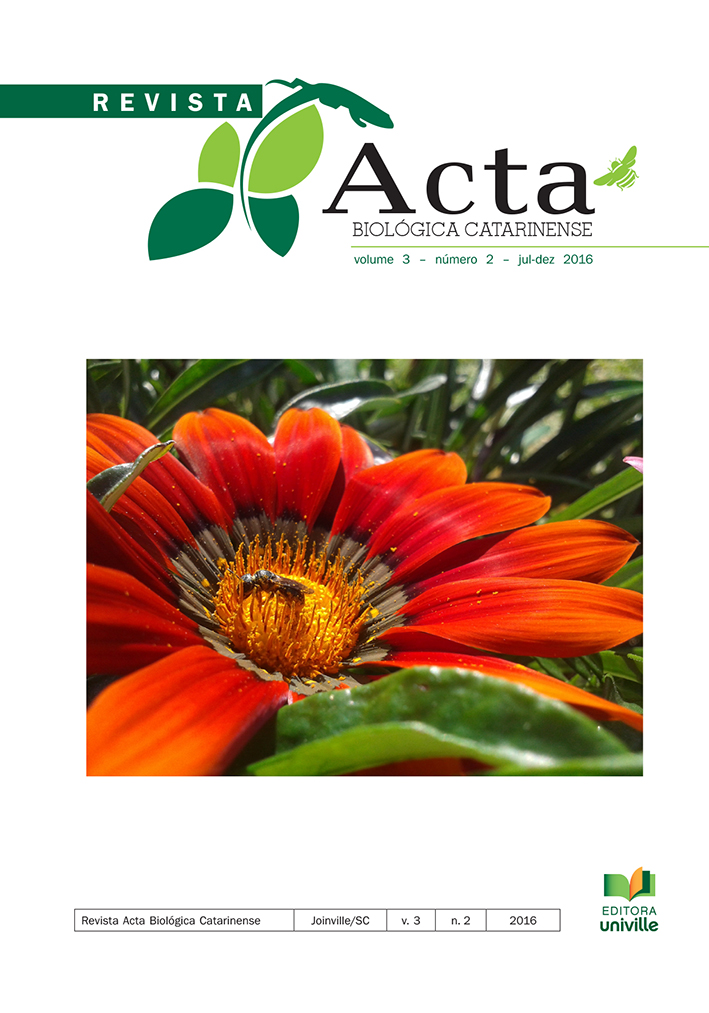Morphological plasticity of Ilex theezans Mart. ex Reissek (Aquifoliaceae) in two restinga vegetation of Santa Catarina coastal plain
DOI:
https://doi.org/10.21726/abc.v3i2.476Palavras-chave:
Functional ecology; morpho-anatomy; phenotypic variation; population ecology; rain forest.Resumo
The restinga, an environment of the rain Forest, is an ecosystem by the seacoast composed of diverse plant communities commonly found in sandy and undeveloped soils. This study aims to investigate possible intraspecific differences in Ilex theezans species, whose distribution in restinga includes two heterogeneous formations, shrub-tree restinga and transition forest. The study focused on a restinga remnant area located in Acaraí State Park, in the city of São Francisco do Sul (SC, Brazil). In each environment, five adult individuals were selected and had wood samples collected from their stems at breast height and 25 leaves of the third and fourth nodes of the outer canopy branches sampled. Chemical and physical soil variables were analyzed for each formation. The results show that there are significant differences between the leaf and the stem functional attributes and soil data analyzed, but as the PPI (Phenotypic Plasticity Index), the species Ilex theezans in the studied formations present low plastic potential.


